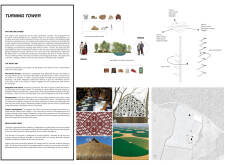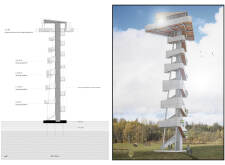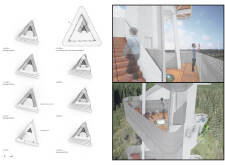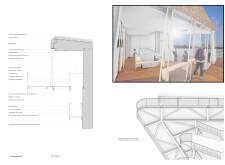5 key facts about this project
The architectural design features a vertically elongated form characterized by a 15-degree twist. This innovative geometry is not only visually intriguing but also serves practical purposes, allowing for optimal viewpoints that enhance the visitor experience. The project's materials include concrete for structural integrity, galvanized steel for durability, timber for warmth, thatch for traditional appeal, and expanded metal mesh to ensure safety while allowing visibility. Together, these components contribute to a cohesive architectural expression that resonates with its surroundings.
Unique Integration of Nature and Community
What makes the Turning Tower distinct from many similar architectural projects is its emphasis on ecological reciprocity. The design features viewing platforms that fluctuate in height, encouraging engagement with the landscape from various perspectives. This interplay fosters a deeper appreciation of nature as visitors are provided with opportunities to interact with native plant species integrated into the structure itself. The central community room acts as a hub for gatherings and educational workshops, promoting dialogue and collective stewardship among users.
The meticulous design approach incorporates elements of traditional architecture, such as the thatched roof, while employing modern materials for structural performance. This blending of old and new underscores the project's commitment to preserving local heritage while addressing contemporary needs. Architectural strategies such as multifunctional spaces and dynamic viewpoints enhance the usability of the tower, creating an inviting atmosphere for all visitors.
Functionality and Educational Outreach
The Turning Tower emphasizes the importance of community involvement in environmental stewardship. The design supports educational outreach through interactive programs that teach sustainable practices. Features such as planters and birdhouses within the architecture enhance local biodiversity, promoting habitats for wildlife. The tower’s architecture serves not just as a space for observation, but as a learning platform encouraging visitors to engage with the ecosystem actively.
For comprehensive insights into the Turning Tower project, explore its architectural plans, sections, and detailed designs. A closer inspection of its architectural ideas will illustrate the thoughtful considerations and innovative strategies employed throughout the development.


























